4.4 Laboratory equipment
Electricity
- Do not connect too many multiway sockets to one electrical socket. Secure all multiway sockets! No contacts or multiway sockets should remain on the floor. No contacts should be inside, in front of or under a fume hood due to the risk of fire.
- Do not wind too many cables on the same coil. If the cable is overloaded, it may overheat, resulting in the risk of fire.
- Do not allow wires to be stretched across the floor where they would present a tripping hazard.
The condition of wiring, plugs, cords and related equipment should be frequently inspected. Replace wiring that is frayed or worn.
Ovens and drying chambers
Ovens and drying chambers must not be used for flammable or hazardous substances due to risk of explosion and emission of hazardous gas.
Hotplates
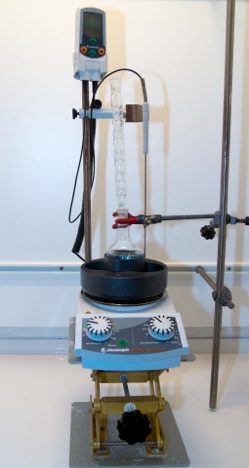
Electric hot plates should always be placed securely on a fireproof base. There should be a free space of at least 50 cm in height above the hot plate.
Electrical hotplates should always be coupled to the electricity via a security timer. Water and oil baths should be metallic and equipped with overheating protection. The temperature of an oil bath should be at least 20 °C lower than the flash point of the oil being used.
It is strongly recommended to exchange oil baths for heating blocks.
Vacuum glass equipment
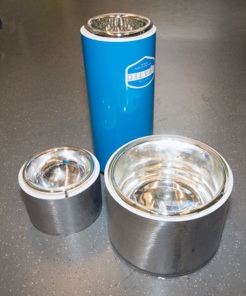
All glass equipment that is used under vacuum should be designed for it, made from special durable glass and assembled with the greatest care. When working with vacuum equipment, protective goggles should be worn. Remember that Dewar and Thermos bottles are vacuum vessels.
Central Vacuum System
Be aware that usage of the central vacuum system always creates condensate from liquids and the collection of particles or molecules from your solids in the central waste collector. Never use the central vacuum line for poisonous chemicals.
Never use the central vacuum line to the rotary evaporator since it can cause large amounts of solvent in the vacuum line central receptacle.
Always use a safety flask when applying vacuum to liquids or solids.
Cold water hoses
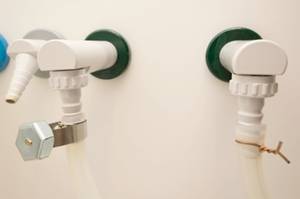
Always fasten cold-water hoses with a gear clamp. Use a PVC hose or similar for for low pressure and a reinforced hose for high pressure.
More information can be found in “Plan of action for water outage”.
HPLC equipment
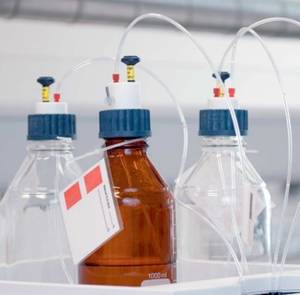
Ventilated cabinets for solvent bottles should preferably be used.
If ventilated cabinets are not available the solvent bottle should be sealed with a special stopper that prevents solvent vapor leakage.
The stopper allows air flow into bottle.
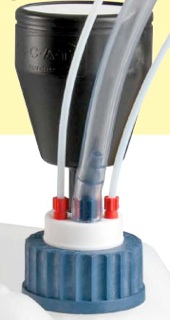
Waste bottles not inside a ventilated cabinet should be sealed with a special stopper. The exhaust filter prevents solvent vapor to escape.
